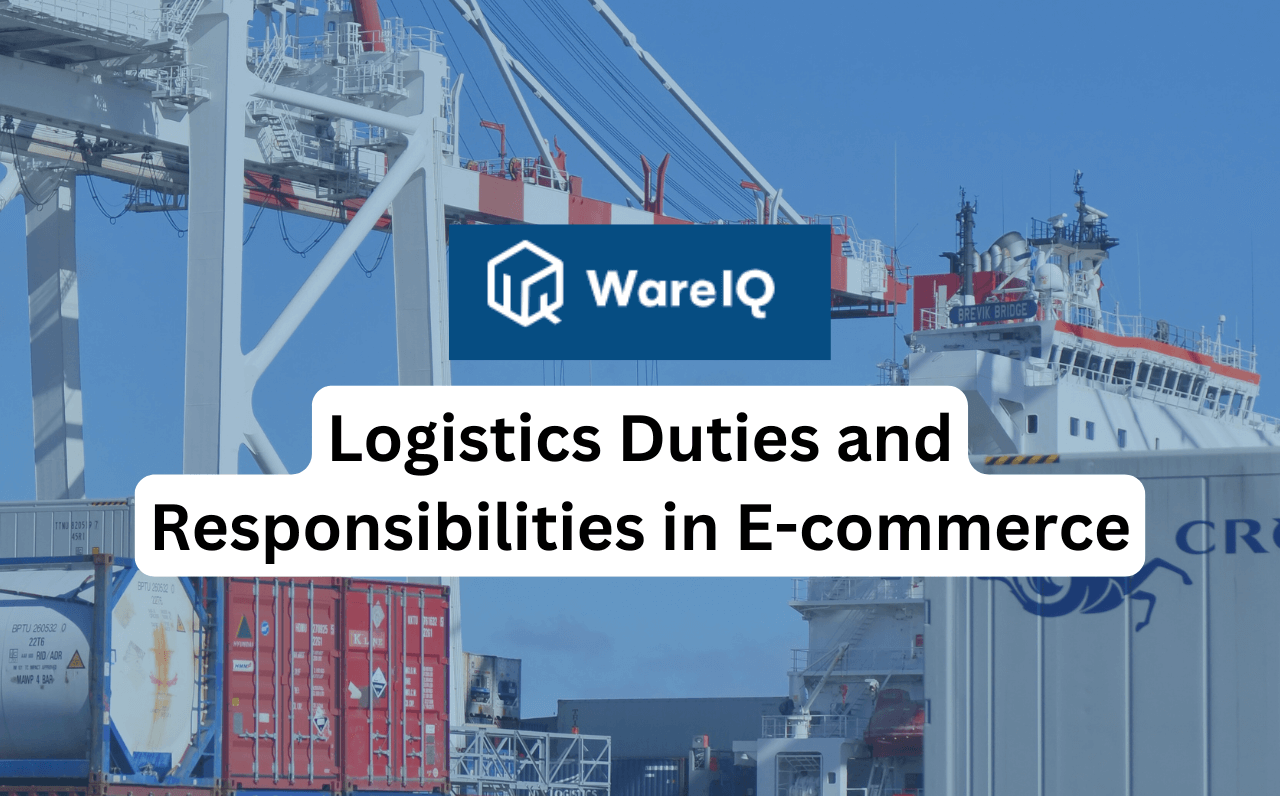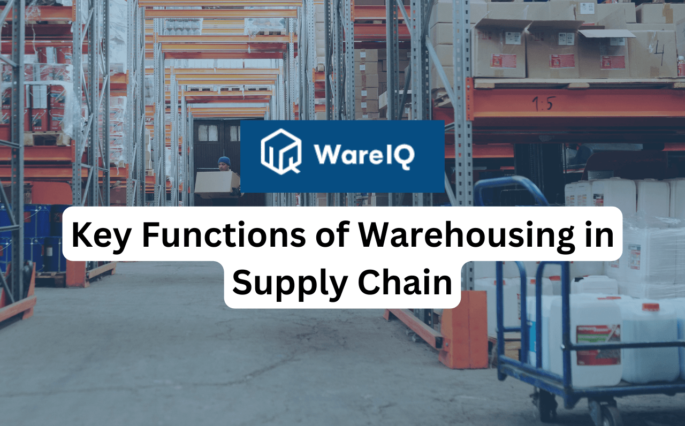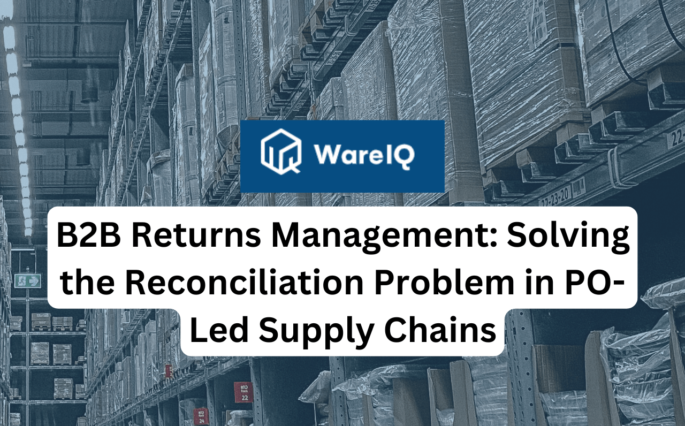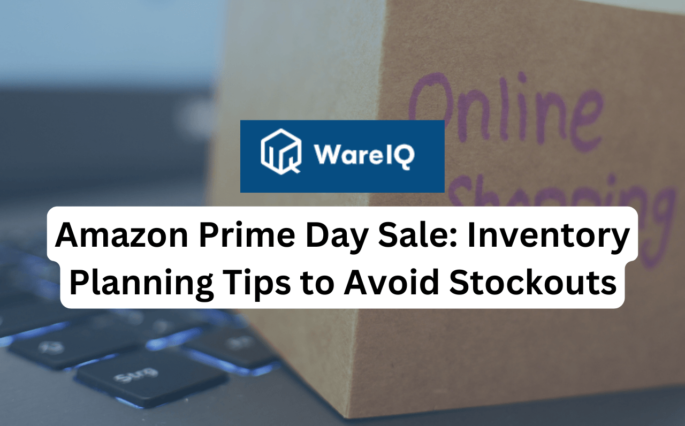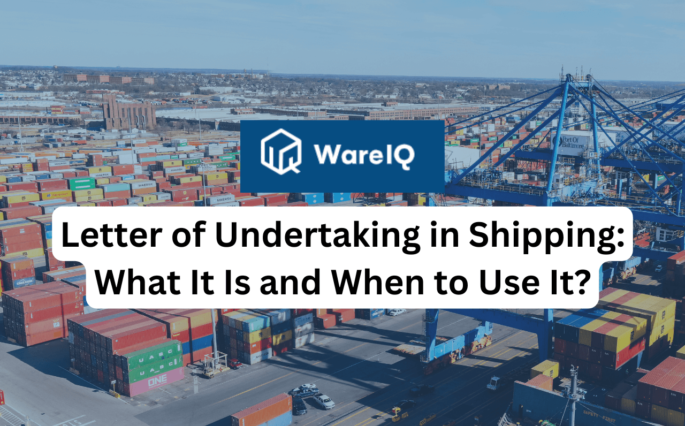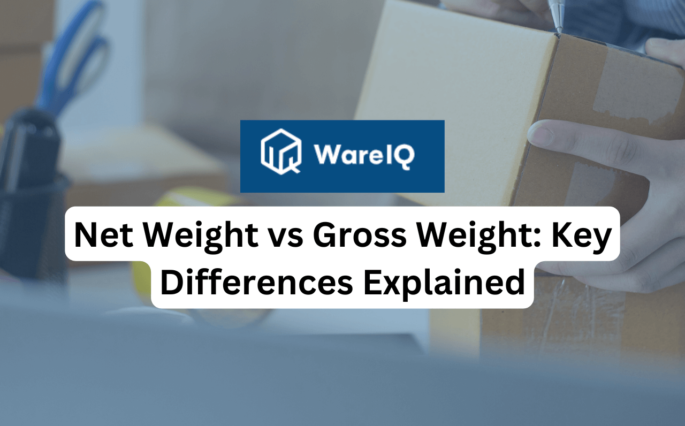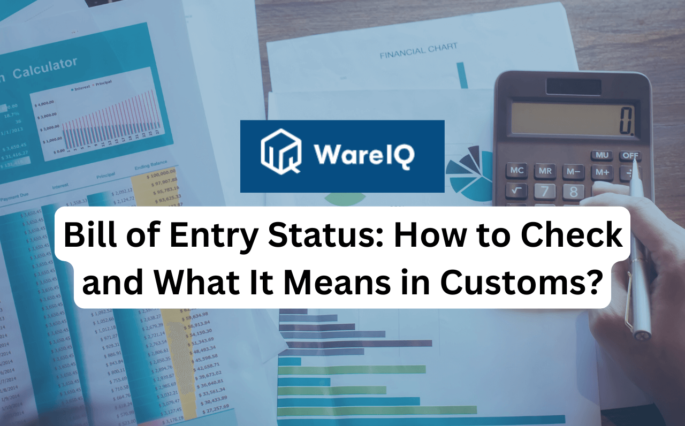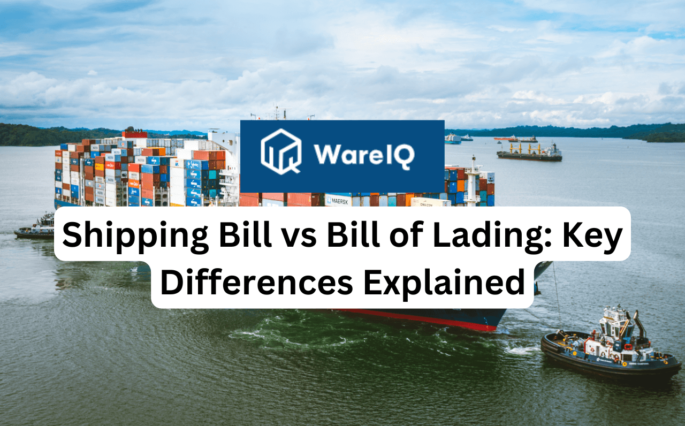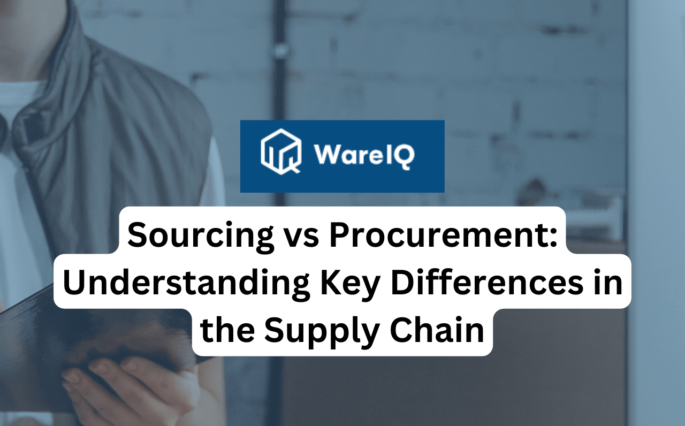Top 10 Best eCommerce Fulfillment Companies in India to Grow Your Online Business in 2025
E-Commerce fulfillment is an important business component to ensure that orders are delivered to customers on time. Receiving inbound wholesale shipments, sorting stock, and shelving inventory for efficient picking and packaging before it gets to the customer's doorstep is all part of order fulfillment.For businesses looking to scale, choosing the right partner for ecommerce fulfillment India can make a significant difference in delivery speed and customer satisfaction. Companies like WareIQ specialize in ecommerce fulfillment India, offering end-to-end solutions to manage inventory, packing, and shipping efficiently.Order fulfillment setbacks for startups and SMEs can harm their business and operational efficiency. As the company grows and attracts customers worldwide, creating an order fulfillment system has gotten more difficult. Customer satisfaction and income can suffer if the order fulfillment procedure is inefficient. As a result, the company's reputation is also affected. Read along to understand how eCommerce fulfillment companies and dropshipping fulfillment companies can help eCommerce & D2C brands to grow their business and list of best fulfillment companies for eCommerce.Top eCommerce Fulfillment Companies (Updated for 2025)1. WareIQ Fulfillment CompanySourceWareIQ, one of the top ecommerce fulfillment companies in India is a category-defining, best- in class full-stack eCommerce fulfillment tech platform (with inbuilt inventory planning, order management & shipping system) for modern brands to accelerate online sales/ expedite revenue growth & profits with same/next-day delivery. WareIQ is one of the best order fulfillment providers.A few of the important features of WareIQ are as follows:Pan-India Fulfillment & Darkstore NetworkPlug & play with no minimumCompliant with Amazon Seller Flex, Myntra, Flipkart Assured & other marketplacesRegional Sourcing hubs to cut first mile costsIn-house managed warehouses – no outsourcingInventory & Network Planning ExcellenceBest-in-class AI models for sales forecasting & auto-replenishment triggersProduct segmentation according to product type (Regular, Non-Regular, Seasonal, etc.) to improve sell-through focusVertically Integrated Fulfillment Tech StackIntegrated with 20+ top marketplaces (national and international marketplaces) & D2C platformsIntegration with National, Regional and Hyperlocal couriers, covering 27k+ pin codesOne unified tech stack for OMS & WMSSupply Chain Productivity ApplicationsRTO Shield – 100% RTO protectionBranded Tracking – Create the BEST post-purchase experienceEngage – Alert customers on shipment status through Whatsapp, SMS, and EmailCustomer Feedback – Gather feedback, improve customer experience & trustWareIQ RushOffer same-day delivery at no MOQ or distance-based billingJump in revenue conversion up to 30%Near-zero RTO%NDR & COD Verification via WhatsappReduced Cost per Shipment (CPS)Explore - WareIQ's eCommerce Fulfillment Solution India2.DHL Fulfillment CompanyDHL Supply Chain, a division of Deutsche Post DHL, introduced the India fulfillment network (IFN) to enable businesses to power their e-commerce business models by providing access to omnichannel distribution capabilities across major markets, according to a press statement. Through additional ready-to-use hubs, their fully integrated end-to-end fulfillment solution on a 'pay per usage' basis helps firms de-risk. Some of the features of DHL IFN fulfillment company for eCommerce are:One-view tech ecommerce fulfillment platform for processing orders, inventory management, order fulfillment & delivery to the end consumersNext-day delivery in over 80 citiesRange of B2B & B2C warehousing servicesSeamless logistics managementInventory optimisation, smoothing, and synchronisationIn-plant logistics; just-in-time inventory and Kanban replenishment of raw materials/components to manufacturingVendor-managed inventoryInbound handling, consolidation, and global distribution to outstations3. ShipBob Fulfillment CompanyShipBob has no order minimums and aside from Amazon, has the largest network of domestic and international fulfillment centers on our list, allowing it to provide high-level distribution capabilities. ShipBob provides several eCommerce-related services. Businesses can obtain quick access to a variety of web integrations, eCommerce inventory features, and advanced filter capabilities. ShipBob, which has been in business since 2014, delivers great customer service and assigns each online business its dedicated account manager.Some features ShipBob has areAffordable pricingB2B fulfillment with EDI complianceItemized billing format for transparencyFDA-certified climate control and handlingFBA prep services4. DeliverrDeliverr is an excellent option for startups, especially if the majority of their customers are located in the United States. Deliverr, like Amazon Prime, offers 2-day shipping across several shopping channels. What sets them apart is their transparent pricing. Sellers may find out exactly how much their estimated spend will be by inputting product information into the cost calculator on their website. Deliverr has some drawbacks, such as the lack of return processing and subscription box kitting. Some of the features include:All-in-one fees include receiving and fulfillmentReal-time inventory and order trackingFree trials for limited SKUsFast-shipping tagsSmart algorithm to allocate inventory across Deliverr's fulfillment warehouse network intelligently5. ShipMonk Fulfillment CompanyShipMonk's platform is tailored to match the business' scalability needed to accommodate growth. But they do not provide batch fulfillment services and require a minimum of $250 in pick and pack fees. ShipMonk has been around since 2014. ShipMonk specialises in B2C eCommerce, subscription boxes, and crowdfunding projects and offers a wide range of fulfillment services. They also provide access to a vast list of integrations from which to choose while assessing the best possibilities for your business. ShipMonk is recognised for its subscription fulfillment services, but that's only a small part of what they do for customers, and its services may be customised to meet their specific needs. Key features include:Amazon seller-fulfilled prime eligibilityOnline billing portalWarehouse automationRobust customisation & branding optionsTax benefits and cost reductions for volume importersNo setup or inventory receiving feesDiscounted shipping ratesClaims managementInternational order processingPhotos of packed orders before they’re shipped6. FBA (Fulfilled by Amazon) - Amazon Fulfillment CompaniesBecause of its automatic Prime designation, FBA gives sellers better access to Amazon's over 150 million Prime subscribers. FBA is a good option for Amazon retailers since it handles all customer inquiries, administers returns and refunds, and automates order fulfillment, saving time.However, FBA's pricing and procedures are more complicated than those of many other fulfillment warehouses, particularly when selling large or heavy items, so do your study to avoid paying excessive fees. Its key features are:No order minimumsHandling all customer inquiries, refunds, and returnsFBA can fulfill non-Amazon ordersUses inventory pooling that groups identical products from different sellers7. Falcon FulfillmentFalcon is one of the leading eCommerce fulfillment & warehouse service providers specialising in health and wellness and cosmetics fulfillment and was founded in 2015. Falcon Fulfillment provides straightforward pricing and a simple platform to scale as your company grows. The company presently only covers the United States. Due to the 4,000 minimum monthly order requirement and the lack of overseas Warehouses, Falcon is a good choice for established eCommerce vendors who have their customer base in the US. Another disadvantage is that some integrations necessitate the use of ShipStation.Some of their features include:Live order editingCustom packaging optionsEco-friendly packaging optionsKittingReturns management8. Rakuten Super Logistics CompanyRakuten Super Logistics provides packaging and shipping services and is one of the best eCommerce fulfillment services suited for enterprises. They also assist eCommerce sellers with marketing. As a company that serves enterprises, Rakuten offers personalized pricing quotes and tailors services to meet the needs of the enterprises. Rakuten does not have global fulfillment centers, specialised packaging, or DHL integration, despite being a favoured fulfillment provider for enterprises. Key features of Rakuten include:Tailored services for enterprisesIntegrated marketing services at additional costs1-2 day ground shipping in the United StatesSpecialty fulfillment centersKitting and subscription box services9. FedEx Fulfillment CompanyFor international delivery and order management, FedEx Fulfillment is the best option. FedEx Fulfillment Services are modular and adaptable, allowing businesses to develop and customise options to meet their specific requirements. In the extremely competitive aftermarket and critical inventory business, FedEx Fulfillment Services offers a strategic advantage. The FedEx Global Distribution Centre (GDC) provides hub-based warehousing for both forward and reverse logistics, with the capacity, environment, and experience to store, organize, and ship orders when it's needed. FedEx, on the other hand, does not offer product-based batch fulfillment, and while there are no setup fees, it does levy account fees when orders fall short of the minimum requirement. Features of FedEx fulfillment are:Global footprintRange of eCommerce integrationsEasy-to-use platformExtensive delivery networkFast shipping and returns management10. Red Stag fulfillment CompanyRed Stag can handle a wide range of product orders, but it specialises in packing and shipping larger, heavier items. They have remarkable scalability, allowing them to fulfill the needs of both small and large businesses. Red Stag Fulfillment's extended services provide various elements that eCommerce business owners may make use of to assist them to get products to their intended destinations quickly and efficiently. Red Stag excels at handling complicated shipping requirements and heavy cargo. Key features includeVideo monitoringExcellent customer supportA pallet delivery systemSame-day shipping and order completion guaranteefulfillment warehouse networkExcellent scalabilityBest eCommerce Fulfillment Companies - Quick Comparison
Company Name
Key Features
Specialization
Locations Served
WareIQ
Pan-India Fulfillment & Darkstore Network, Same/Next-day delivery, AI models for sales forecasting
Full-stack eCommerce fulfillment
Pan-India
DHL Fulfillment
Next-day delivery, Inventory optimization, B2B & B2C warehousing services
Omnichannel distribution
80+ cities in India
ShipBob
Affordable pricing, B2B fulfillment, FBA prep services
Domestic & International fulfillment
Global (Domestic & International)
Deliverr
Transparent pricing, 2-day shipping, Smart inventory allocation
Fast shipping, Transparent pricing
U.S. focus, global reach for eCommerce
ShipMonk
Amazon seller-fulfilled prime eligibility, Robust customizations, Discounted shipping rates
B2C eCommerce, Subscription box fulfillment
Global
FBA (Fulfilled by Amazon)
Prime eligibility, Handles all customer inquiries, Refunds and returns management
Amazon-specific eCommerce fulfillment
Global (Amazon marketplace)
Falcon Fulfillment
Live order editing, Eco-friendly packaging, Kitting
Health & wellness, Cosmetics fulfillment
U.S. only
Rakuten Super Logistics
Tailored services, 1-2 day shipping, Kitting and subscription box services
Enterprise-focused fulfillment
U.S. only
FedEx Fulfillment
Global distribution, Extensive delivery network, Fast shipping
International delivery & order management
Global
Red Stag Fulfillment
Video monitoring, Same-day shipping, Scalability for heavy cargo
Large & heavy item fulfillment
Global (U.S. primarily)What Do eCommerce Fulfillment Companies Do?E-commerce fulfillment companies specialise in order processing and delivery. This procedure includes receiving and storing goods, processing orders, picking and packing, inserting packing slips, and eCommerce shipping. These companies use software that connects to the seller's website. Companies providing eCommerce fulfillment services inspect the products, pack them, and ship them to the consumer once an order is placed. They also help retailers with inventory management and tracking. Orders are also stored at eCommerce fulfillment facilities.eCommerce fulfillment services can be performed by third-party order fulfillment companies that will manage all of the eCommerce operations when an order is placed, allowing businesses to focus on marketing and product development. Order fulfillment helps startups/small businesses, and SMEs alleviate the burden of having a physical location or a dedicated storage facility to fulfill orders.[contactus_uth]Self-Shipping vs eCommerce Fulfillment - What is Right For You?[table id=10 /]What are the Benefits of Using Fulfillment Companies?Key benefits of using Best eCommerce fulfillment companies for the order fulfillment process includeRemote inventory management: With the service provider's warehouses, businesses will not require dedicated physical storage spaces. For a flawless order fulfillment experience for the customer, fulfillment companies for eCommerce can be accessed on-demand or long-term at any preferred location.A shorter distance between source and delivery location: By shortening the distance between the product's source and the customer's location, eCommerce fulfillment centers can ensure speedier order fulfillment. Optimised storage: Businesses can easily store stock goods in areas with the largest volume of orders using eCommerce warehouse fulfillment technologies provided by the service partner. (Note that different types of eCommerce warehouses are used for different functions)Improving customer satisfaction: Positive feedback from customers about a speedy and flawless delivery process. Utilizing comprehensive order processing services can help businesses improve brand loyalty and promote repeat purchases by providing a pleasant client experience.Must-Have Features of eCommerce Fulfillment CompaniesWhen businesses partner with 3PL fulfillment companies for eCommerce order fulfillment, the following features should be provided with the help of an app integration for better order management:Warehousing: The fulfillment center should store and manage inventory and process them based on customer orders.Order Picking: When a customer places an order, the fulfillment center should promptly pick up the required order items from the warehouse to process them for delivery.Order Packaging: Once the required items are picked up from the warehouse, the fulfillment center should work on packing them appropriately to ensure that they arrive undamaged at the customer's location. If the customer has placed multiple orders, they should also work on clubbing all the SKUs to have a combined package created with a single shipping label to deliver it easily.Shipping: Once the order is packed and ready to go, they should have it shipped from the best fulfillment center to the customer's location to ensure a quick delivery. Fulfillment companies for eCommerce should share real-time tracking details with the seller and the customer for order visibility.Returns management: In case an order is undelivered or is returned by the customer, the same should be processed by the eCommerce fulfillment center and accordingly added back into the business's inventory (if the products are undamaged and unused).eCommerce platform and multi-channel integration: Integration with all eCommerce platforms is critical for eCommerce fulfillment software. This ensures that no orders are overlooked, which leads to decreased customer satisfaction.Access to a customer portal: The software of fulfillment companies needs to provide a good platform for customers. Customers that order frequently may choose to use a customer portal to alter invoicing and delivery options, track order fulfillment status, and examine prior orders. This feature also helps detect anomalies, identify frequent returners, and other factors that can be looked into to improve logistics and customer satisfaction.Technology-driven 3PLs simplify businesses to integrate their online store with their system. This creates a two-way information flow, allowing business owners to monitor inventory levels in real time. They also have access to dependable, accurate, and transparent data.Costs and Challenges of Partnering with Best Fulfillment CompanyHaving an eCommerce fulfillment partner for order fulfillment does not require any upfront capital. While the costs of fulfillment services can vary based on the provider being chosen, most of their revenue comes from long-term storage costs. However, other associated costs includeSetup feesWeight ChargesPackaging feesProcessing and Returns costsAccount ManagementCustomer Support costsAdditional one-time costs for other things may also be a part of the fulfillment center fees. Examples are order cancellations, SKU labeling, barcoding, payment card processing, marketing inserts, product assembly, etc.A few challenges that businesses can experience when partnering with an eCommerce fulfillment center areLimited inventory of what the business ownsStock replenishments to the fulfillment centerThe upfront investment for services like warehousing and distributionBad service from the 3PL partner affects the business reputation5 Questions to Ask While Choosing New 3PL Fulfillment Provider in 2025You have to consider a bunch of factors while choosing a fulfillment provider. Here are some important questions to ponder before you make your decision:Does the eCommerce fulfillment company have a PAN-India presence?It is your key takeaway in partnering with a 3PL and cannot be compromised. For instance, WareIQ has a network that can cover 90% of cities in India with over a million population for next-day delivery. That’s the kind of presence you should look for.How easy is it to scale?Traditional 3PLs that have vertical integrations face certain limits in this aspect. A decentralized inventory network that WareIQ has, allows us to scale to new demand centers quickly.Does the fulfillment provider have minimum requirements or rigid contract sizes, terms, etc?You will find that most providers would have certain criteria which may not be favorable for all parties and at all times. A good provider must be flexible with client requirements. For example, WareIQ provides the option of micro-fulfillment where you can start with something as small as a single rack.Does the provider give technology-powered value-added services?In today’s data-driven world, analytics on inventory placement and supply chain can be extremely helpful in staying efficient and cost-effective in all our operations. WareIQ is able to provide the same with its in-house software platform.How easy is it to integrate your business into the supply chain of your 3PL partner?When you are shifting to your new partner, you might not want to wait for too long before the end-to-end flow is set up. A traditional 3PL firm might take from 3 to 6 months for the same. WareIQ is able to onboard new partners within a week!Why WareIQ should be your Preferred Fulfillment Company in India for eCommerce Business?WareIQ, is a leading provider of full-stack eCommerce fulfillment services in India for some of the most reputed brands in India. WareIQ, a fulfillment company for eCommerce offers a full-stack platform for eCommerce companies to enable same-day delivery and next-day delivery to customers – an Amazon Prime-like experience but accessible to everyone.The immediate and most important benefit you can get when you choose WareIQ as your preferred order fulfillment company is the ability to safely deliver your products across the country (including tier 2 and 3 cities) faster than ever before. It will give you the wings needed to provide an Amazon-level service. Beyond this, there are other interesting benefits of working with top order fulfillment companies.Once you hand over the management of eCommerce logistics to the right 3PL provider like WareIQ, you will be able to make time to focus on other important aspects of your business like brand marketing, launching new products, etc. The job of getting them to your customers is out of your concerns with a trusted partner.WareIQ platform is powered by cutting-edge technology that makes it super easy to track and monitor your orders in real-time.Features like smart inventory placement offered by WareIQ can further help your business drive sales on time at high-demand locations.Key Offerings:Pan-India Fulfillment Network: Over 12 WareIQ-operated fulfillment centers, compliant with Seller Flex & FAssured, providing last-mile delivery across 27,000+ pin codes.Multi-Channel Fulfillment Platform: Seamless plug-and-play integrations with major marketplaces (Amazon, Flipkart, Myntra, Nykaa), D2C platforms (Shopify, Magento, WooCommerce), WMS, and ERPs. Supports fulfillment across distributors, flagship stores, and eCommerce channels, along with advanced analytics.Inventory LogIQ: AI-powered inventory planning to reduce stockouts and automate replenishment across multiple sales channels.Tech-Enabled Returns Management: Quality control solution featuring HD media capture of damaged or missing products to prevent marketplace claim rejections.Seller Enablement & Support: Dedicated account managers, APOB/PPOB registrations, GST registration assistance, COD & NDR verification, and comprehensive seller support.[signup]eCommerce Fulfillment Companies FAQs (Frequently Asked Questions)What is an eCommerce fulfillment company?The component of your eCommerce company that involves operations after receiving an order till the delivery of that order to the end customer is known as eCommerce fulfilment. These include picking, packing, shipping, and delivery of product to the customer’s door.What are the different types of Order fulfillment?Order fulfilment is divided into four categories: in-house, outsourced, dropshipping, and hybrid.Why should you outsource fulfillment to 3PL Fulfillment Companies?· Ready Infrastructure that can handle the ups and downs of your ecommerce operation· Processing orders efficiently· Focus on your core expertise to build your ecommerce business.· Reduce costs of ecommerce delivery· Get actionable information and best technologies· Expand your geographic footprint with warehouses across India· Leverage existing integrations to your advantageWhat is the Fulfillment cost?Fulfillment costs in warehousing are the total of all charges incurred throughout the process of moving merchandise from receiving to distribution.Fulfillment costs can include:i) Warehousing and storage costs: These are the expenses associated with storing and managing inventory, including rent, utilities, and staffing.ii) Picking and packing costs: These are the expenses associated with preparing orders for shipping, including labor, materials, and equipment.iii) Shipping and handling costs: These are the expenses associated with actually delivering orders to customers, including the cost of shipping labels, packaging materials, and carrier fees.iv) Return handling costs: These are the expenses associated with processing and handling returns, including labor, materials, and any restocking fees.Fulfillment costs are a key factor to consider when running an e-commerce business, as they can have a significant impact on your bottom line. It is important to carefully manage and track these costs to ensure that they are as low as possible while still providing a high level of service to your customers.How do we calculate fulfillment costs?Fulfillment cost per order = Total warehouse cost per order – total warehouse costs divided by annual orders shipped.Are there any affordable eCommerce warehousing options for small businesses?Yes, there are affordable e-commerce warehousing options for small businesses. Here are a few options to consider:i) Self-storage units: Renting a self-storage unit can be a cost-effective way to store inventory if you don’t need a large warehouse space. This can be especially useful if you don’t have a lot of inventory or if you only need storage on a temporary basis.ii) Shared warehousing: Some companies offer shared warehousing space, where businesses can rent space on a per-pallet basis. This can be a cost-effective option if you don’t need a lot of space or if you only need storage on a short-term basis.iii) Third-party logistics (3PL) providers: Third-party logistics providers offer warehousing and fulfillment services at a lower cost than some larger fulfillment centers. They may be a good option for small businesses that need a more comprehensive solution.iv) Online marketplaces: Some online marketplaces, such as Amazon and eBay, offer fulfillment services for a fee. This can be a convenient option for small businesses that sell products through these platforms.By carefully considering your storage needs and shopping around for the best options, you may be able to find affordable e-commerce warehousing solutions for your small business.What are the best eCommerce warehousing companies?There are many e-commerce warehousing companies in India that offer a range of services. Here are a few companies that are known for their quality and reliability:i) WareIQii) Ecom Expressiii) Delhiveryiv) E-Courierv) GoJavasvi) XpressBeesvii) Aaj enterprisesIt is important to research and compare different companies to find the one that best meets the needs of your business. Factors to consider include the services offered, pricing, location, and reputation.What is the future of eCommerce fulfillment?The future of eCommerce fulfillment is poised for innovation and efficiency. With advancements in automation, AI, and robotics, we anticipate faster order processing and delivery. Sustainable practices, personalized experiences, and strategic collaborations with logistics partners will be key trends. Expect a future where eCommerce fulfillment seamlessly integrates technology, sustainability, and customer-centric solutions for a more streamlined and responsive experience.What are the three types of fulfillment centers?The three main types of fulfillment centers are eCommerce fulfillment centers, retail distribution centers, and third-party logistics (3PL) providers. Each serves different business needs based on order volume, delivery speed, and distribution channels.I sell products through multiple channels, including an e-commerce website. Can you recommend a fulfillment company?Yes! WareIQ is a reliable fulfillment company that supports multi-channel sellers. They handle storage, packing, and shipping for e-commerce businesses, helping you streamline order fulfillment and reach customers faster.
